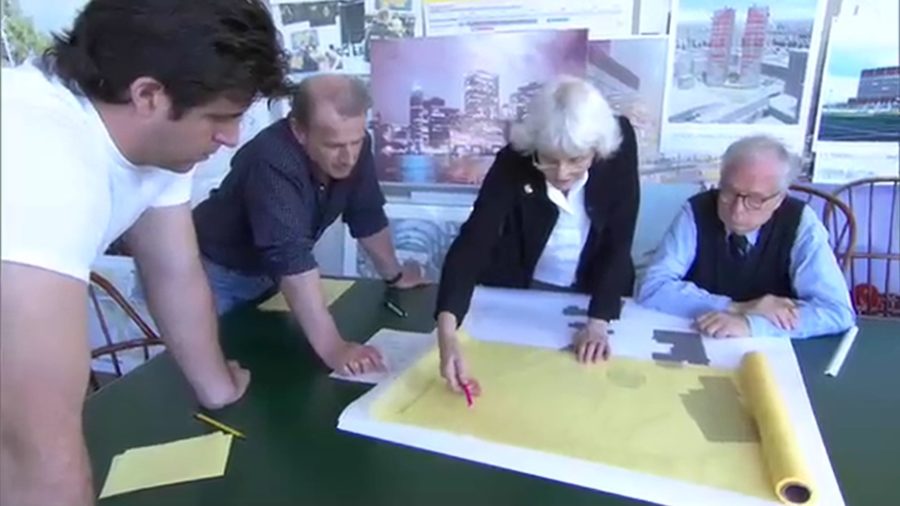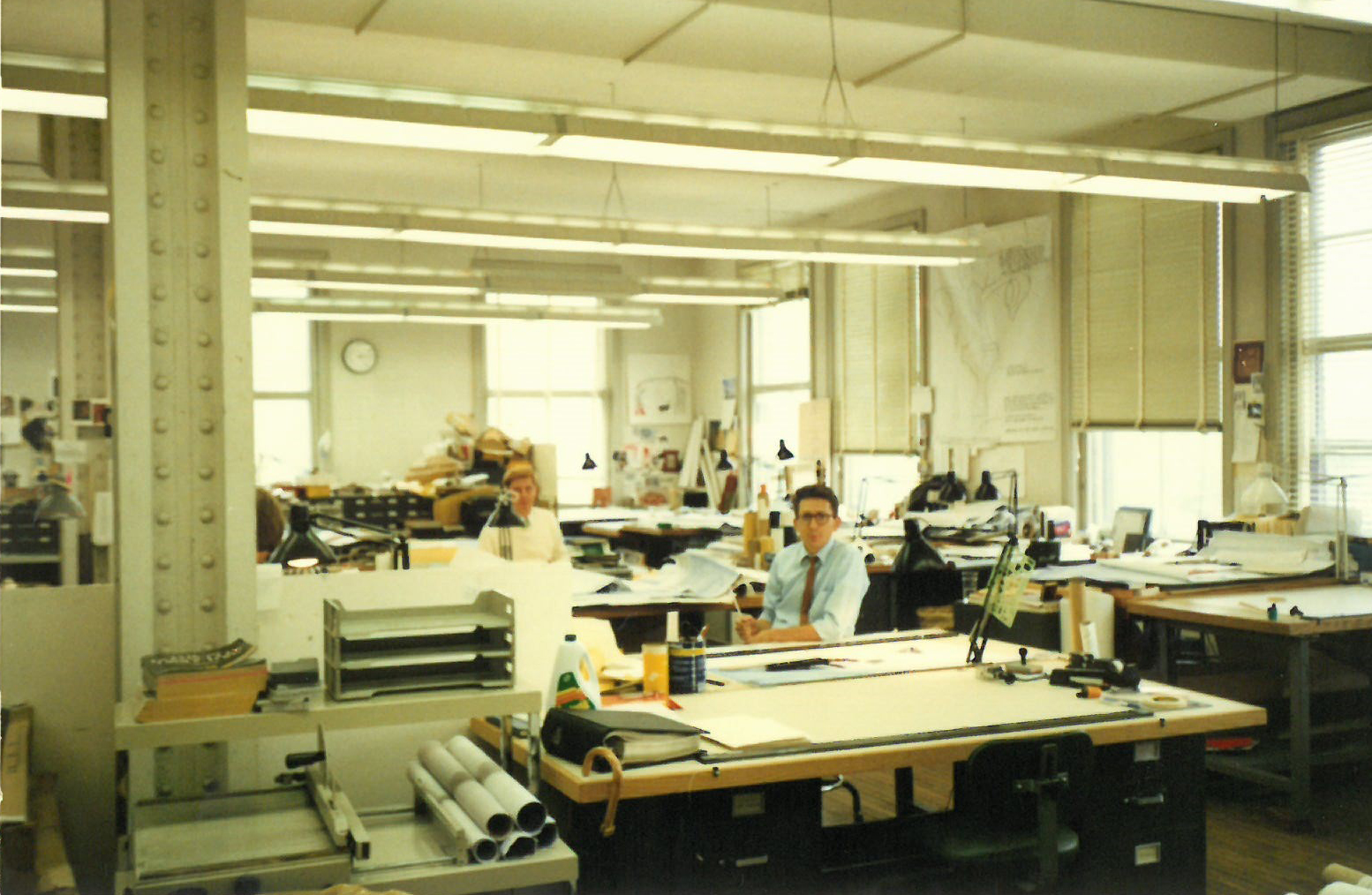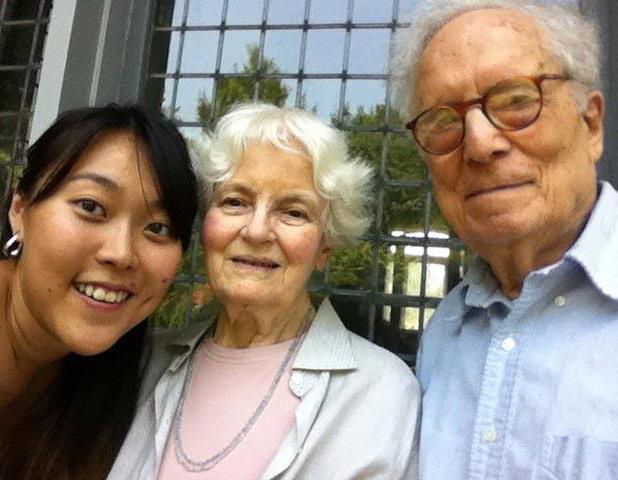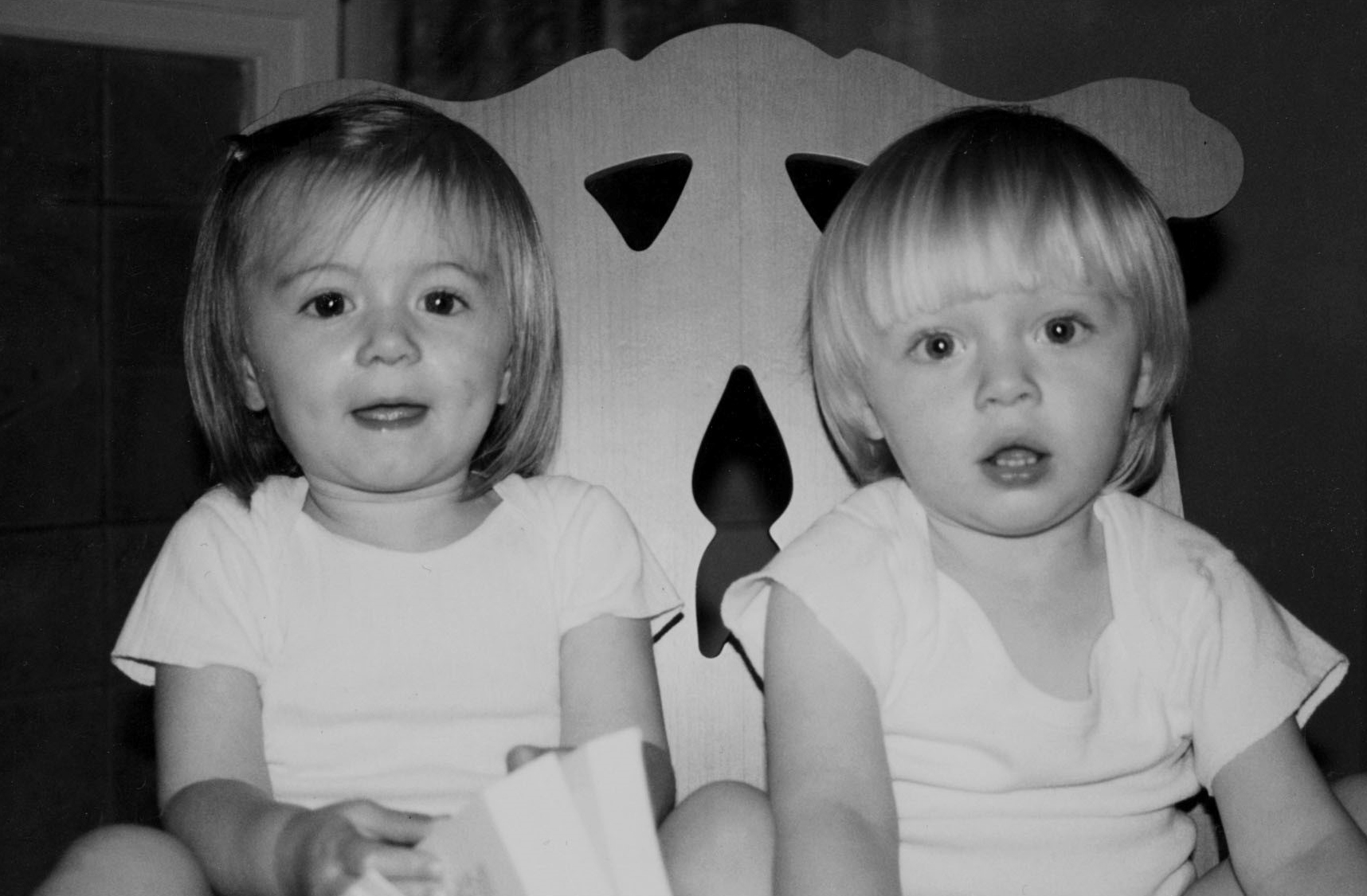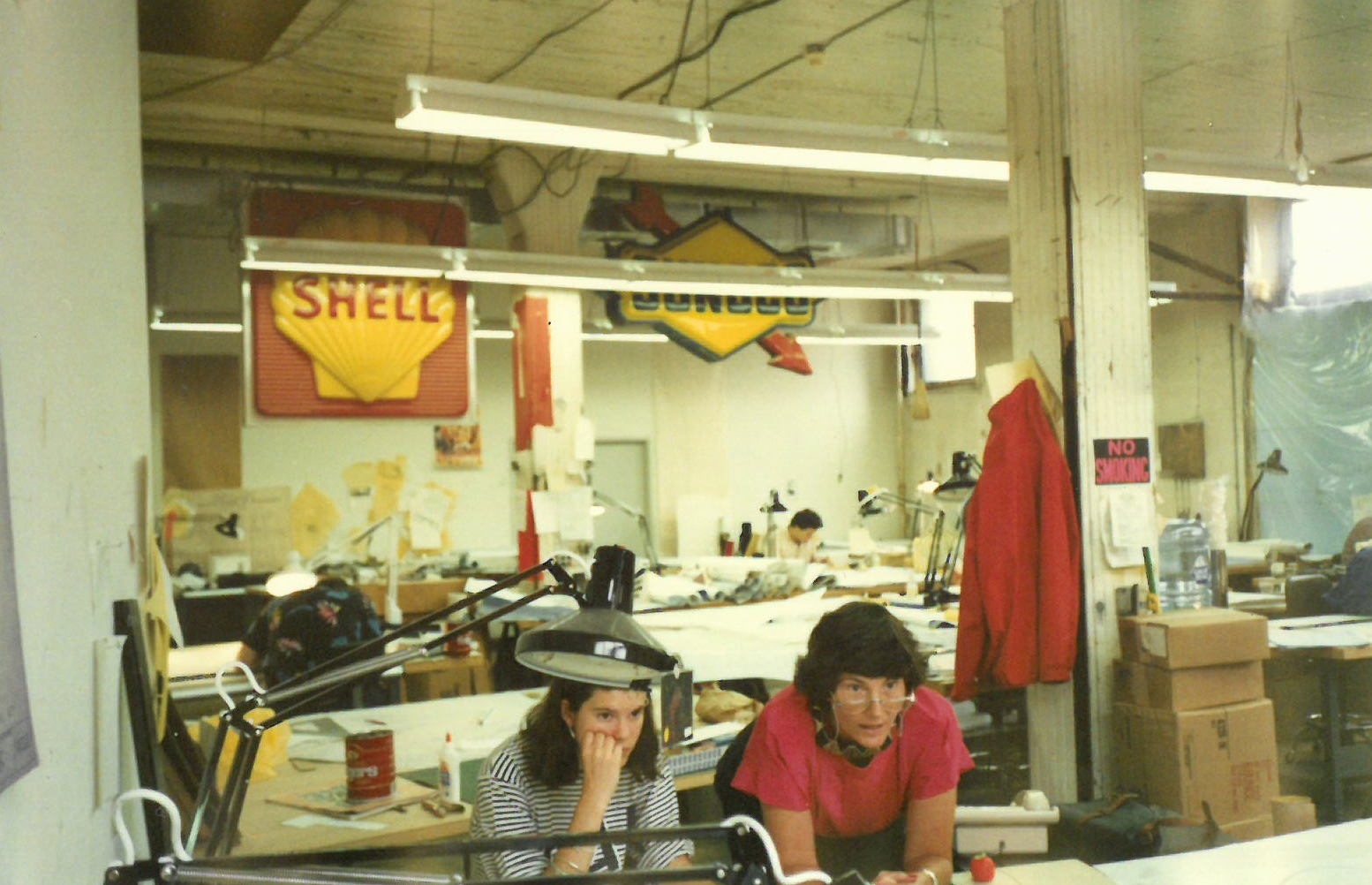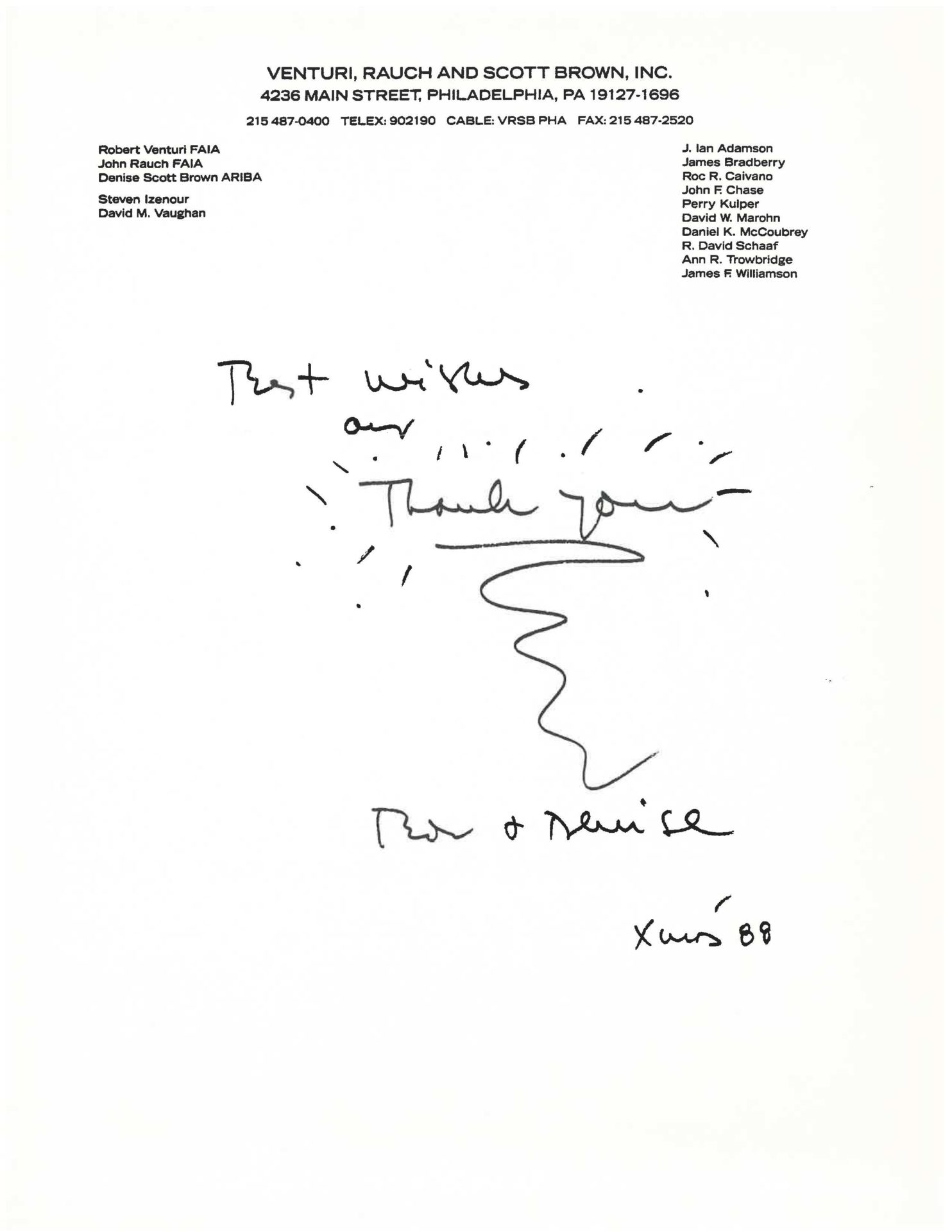Insights
Sep 28, 2018 _ insights
Lessons from Venturi
Three GBBNers—Phyllis Kim, Matt Conti, and Matthew Schottelkotte—had experience working for, and learning from, architect Robert Venturi, who passed away last week at the age of 93.
A pioneering designer and author (with his wife and professional partner, Denise Scott Brown) of seminal books such as Lessons from Las Vegas and Complexity and Contradiction in Architecture, Venturi is credited with ushering in the post-modernist movement with projects like Guild House, the Sainsbury Wing of the National Gallery, London, and the Seattle Art Museum.
Phyllis, Matt, and Matthew sat down together to remember Venturi and reflect on his legacy in their own lives and work:
Phyllis Kim: I worked for Bob and Denise for three months in the summer of 2011. They have a good relationship with my alma mater, Carnegie Mellon University, and they’d have a summer intern live with them. You’d get a stipend, eat meals and go to meetings together—I also gardened and took them to the Amtrak station. I thought being in their presence was an honor because of their place as bold, passionate innovators in the world of architecture. I was hoping some of that would rub off.
Matt Conti: I worked at VSBA [Venturi Scott Brown Associates] from 2004 – 2008. I was attracted by their approach— grounded in history but also playful. I remember he’d do these quick drawings, always with a fat Sharpie and a piece of yellow trace.
Matthew Schottelkotte: I think it’s how he freed his brain up and got the idea out.
MC: He injured his shoulder in 2007 and couldn’t draw for six months. His health may have already been declining steadily, but that was kind of a watershed moment.
MS: I was there from 1986-1990. My wife and I packed up and moved from Cincinnati to Philadelphia and knocked on the door to see if Bob and Denise would hire us. We’d gotten to know a couple of guys who’d worked there so it wasn’t a total cold call. We were interested in what Bob and Denise were talking about and had studied them in school. For me, part of the attraction was their blending of history, modernism, and challenging the status quo. But I really appreciated the humbleness of the work. A lot of the things we studied with Bob and Denise were fire stations and small-scale buildings—which were important to the communities they were going in, but not necessarily buildings at a huge scale. How they made the ordinary extraordinary was very interesting to me.
MC: I definitely agree but I’ve had trouble explaining how the work is humble because often it can appear so flamboyant.
MS: Right now, GBBN is doing a study on the Oak Building, one of Bob’s early, seminal buildings at Penn State University. It was built in ’74 and in the early 70s there was a lot of study about place and scale and how to bring history in, yet still make a building that is special to a site. It’s a reasonably early building that, at the time, was starting to show a lot of the thinking around complexity and contradiction. I think it’s a very important building with regard to what he and Denise were talking about.
MC: It’s emblematic of the thinking that was going on at the time. One of the fun things I got to do when I worked there was work on the renovation of Guild House. The project was almost 50 years old at the time. It was fascinating to hear him talk about the seemingly small and inconsequential pieces—like the building’s original antenna, or how the column was centered–that, for him, were what made that building special and important.
PK: With Bob and Denise, the conversation about architecture was non-stop, but they were playful about it. It was embedded in everything they did. Walking across the street would become a conversation about connectivity.
MC: One winter, I got into a bit of an…altercation, let’s say, with a motorist plowing through a pedestrian only crosswalk outside the office. It had just started snowing and Denise had been watching this unfold from the third-floor conference room. When I got back to the office, she commented on what a nice pattern of footprints we’d left in the snow.
MS: I think that gets to the heart of the work they were always doing. They’d see something that wasn’t necessarily going to be seen by other people. When I was preparing the presentation drawings for the Sainsbury wing of the National Gallery in London for its big public unveiling, I was struggling to draw the trees just right. He could see I was struggling and said, “sometimes, rather than drawing the object, I draw the space between the object and think about it totally differently.” He was telling me don’t draw the leaves but draw the space between leaves that then create the leaves. I think it taught all of us there to try to find something that others aren’t seeing and consider it beautiful. Whether it was Las Vegas, or McDonalds, they found beauty in the ordinary. I can totally see Denise appreciating a fight with footsteps in the snow, because she and Bob looked for the special and unique in everything.
PK: I was reading a piece about him recently, where Denise described a game they used to play, called something like, Mundane Extraordinary, where they tried to find beauty in the ugly or ordinary. I remember they had a big sign collection, including a McDonald’s sign right inside the front door of their house.
MS: I had friend who was traveling with them once and he thought he was going to be cool by pulling into McDonalds to get lunch. And Bob says, “I have never had a McDonald’s sandwich, and I’m not ever going to have a McDonald’s sandwich, we’re going somewhere else.” Pop culture was not to be eaten.
PK: Denise and Bob were both incredibly healthy eaters.
MS: (laughing) On Saturdays, one of my colleagues would bring in the most unhealthy snacks you could think of. We’d have chicken wings, and chocolate chip cookies, and that was our lunch. Bob and Denise would have their tuna and maybe some lettuce.
MC: When I was there, if Denise wasn’t watching Bob too carefully, he’d sneak out to get something greasier.
MS: One weekend morning I had a meeting with Bob. I was there early getting my stuff ready and had my boombox and headphones on, listening to Beethoven’s Ninth. When Bob showed up he said, “Beethoven’s Ninth? No one can work listening to Beethoven’s Ninth.” So, I unplug the headphones and we just sat there and listened to the finale. Well, the finale is 24 minutes long. We sat there, listened to the music, then turned it off and went back to work. Music was a big inspiration for them.
MC: I remember we were working on a façade for a lab building for UC Santa Barbara. We had a striped pattern on the façade and as we were doing different studies on the size of the stripes and the spacing, we pinned these huge drawings on the wall having plotted them at 1” or ½” scale. Denise and Bob would sit there, and tap out the music, trying to get the pattern they wanted.
MS: They reinforced for me that design inspiration doesn’t come from just looking at buildings. So much of what they thought about was in the simple patterns of say, an apron that had belonged to someone’s grandmother, or a common flower, or a piece of music. Inspiration can be all sorts of things. Their work is so rooted in the intellectual history of architecture, but their influence and inspiration really came from a lot of different things. Looking out and beyond was something we learned by being there.
MC: I think that’s where the humbleness comes in.
MS: Two years after we left VSBA, my daughter was born. Two weeks after the birth, a box arrives with a beautifully crafted, Swiss, hand-knitted sweater inside. It was from Bob and Denise. We hadn’t worked there in two years, but they thought of all of us as parts of their family.
MC: Oh yeah. I remember going back after our oldest daughter was born. It was the first time I had seen Denise excited about something other than architecture or design.
MS: They took pride in us all leaving and going off and being successful.
MC: Especially in Philadelphia, anybody who has accomplished anything in architecture, did a stint at VSBA.
MS: When you were working on a project, Bob wanted you to draw and study what you had talked about with him, but he always wanted you to go beyond. I remember multiple times him looking at something you drew and said, ‘yeah, let’s do that,’ and you’re thinking, this is Bob Venturi, and he’s saying to you, let’s do that. He was always looking for the best solution, it didn’t have to be his idea.
PK: When I first arrived at their house, I was very intimidated. They live in an old Victorian with all kinds of pop art around—there was a Lichtenstein in my bedroom! But I quickly felt at ease. His sense of humor was dark and he liked to tell jokes. I became especially close to Denise and we talked a lot about the inequity in architecture between men and women.
MC: We’re currently working on a renovation to the Braddock Library in Pittsburgh. One of the things that changed when I came on the project was looking at how to manage circulation as an interior main street for the building. That was something—maybe more Denise than Bob—that they always wanted. They wanted circulation inside the building to be self-explanatory. They wanted people to know what spaces they were in and know where they were going. I don’t know that I was conscious of it when I was working on the Braddock project, but looking at it again, that approach is there.
MS: For me, Bob and Denise’s work has always been about moving forward. They kept challenging themselves in fresh ways. They were always thinking about the influences of today and layering that with their experience, what they knew of the past, and creating something new. I try to use that same approach, because the ability to develop is lifelong.
Photo captions from top to bottom:
Matt Conti at work with Bob and Denise
VSBA offices ca. 1988
Phyllis Kim with Bob and Denise
Twins Claire and Karl Schottlekotte, aged 2, in a Queen Anne chair designed by Bob and Denise
Bob and Denise’s affinity for signs spills over into the office
A heartfelt holiday greeting, humbly rendered
